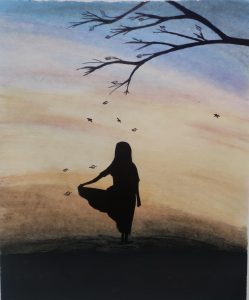 The Yogabliss, Your Heart Life on-line Moving into Meditation classes met this morning. We explored how meditation offers us the experience of being alone together. We also reflected on how solitude offers us a chance to come to know ourselves more deeply. This intimacy can also help us to recognize our interconnection with all of life.
The Yogabliss, Your Heart Life on-line Moving into Meditation classes met this morning. We explored how meditation offers us the experience of being alone together. We also reflected on how solitude offers us a chance to come to know ourselves more deeply. This intimacy can also help us to recognize our interconnection with all of life.
In learning to be alone we find belonging.
We drew from the tenth chapter of Kathleen Dowling Singh’s book, The Grace in Aging: Awaken As You Grow Older. In this section, Solitude: Liberation from Attachment, Release into Sufficiency, Kathleen encourages us “to transform loneliness to aloneness, far before the time of our death.” She explores the nature of loneliness and “chosen aloneness.” The solitude that we choose offers opportunities to recognize our ourselves as unique expressions of life. In solitude we can also realize ourselves as inter-beings arising from innumerable conditions and relationships.
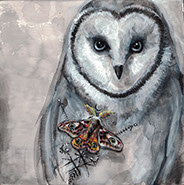 We heard Padraig O Tuama’s beautiful poem, How to [Belong] Be Alone. Padraig is an Irish poet and theologian. He presents Poetry Unbound a program produced by On Being Studios. In his poem he explores the paradox of finding belonging in our aloneness. He invites us to live knowing we will die. He invites us to listen to that part of ourselves that tells the more vital story of our life. You can find a lovely animated version of the poem, “How to Be Alone,” on Youtube.
We heard Padraig O Tuama’s beautiful poem, How to [Belong] Be Alone. Padraig is an Irish poet and theologian. He presents Poetry Unbound a program produced by On Being Studios. In his poem he explores the paradox of finding belonging in our aloneness. He invites us to live knowing we will die. He invites us to listen to that part of ourselves that tells the more vital story of our life. You can find a lovely animated version of the poem, “How to Be Alone,” on Youtube.
I invite you to find balance between ease and a sense of calm attentiveness. Sense how you are right now. How does your body feel? Does it feel tired, energized, tense or relaxed? See if you can make space for this sensory awareness without having to change it in any way. How is your mind? Is it busy or quiet? Does it feel contracted or open, agitated or calm? Let it be just as it is. And how’s your heart? Is it tender or a little brittle? Is it open or slightly closed? Feeling happy or a little down? Let the truth of your experience be just as it is.
And now bring your attention to settle on a home base. Relax. Rest your attention with something that feels simple, neutral: breathing, hearing sound or the felt experience of the body. In the passing of time, memories, plans, impulses arise. When you notice, you are already aware again. Notice if your mind is resisting or struggling with your experience. Know that this practice is about coming to accept the truth of things as they are. It’s about learning how we suffer by not wanting the truth to be. You are bearing witness.
 Together in practice we can agree to be alone with ourselves. I invite us to let go of controlling our experience and allow it to unfold. We can follow our breath, body sensations or to focus on an object. We are invited to stay still through the waves of mental states drawing us to distraction. Right now I am remembering a time when I stood, stock still, my feet planted in sand as the surf rushed around them on to the beach and then back out again to the sea. I stood, feeling the push and the pull.
Together in practice we can agree to be alone with ourselves. I invite us to let go of controlling our experience and allow it to unfold. We can follow our breath, body sensations or to focus on an object. We are invited to stay still through the waves of mental states drawing us to distraction. Right now I am remembering a time when I stood, stock still, my feet planted in sand as the surf rushed around them on to the beach and then back out again to the sea. I stood, feeling the push and the pull.
Together we are learning to be with our human experience. We are learning to be alone and to be without judgment. Sometimes we struggle with experience in a kind of isolation or loneliness. Can we meet these tender feelings with loving kindness? Can we allow these feelings to breathe and to change? At other times we experience an ease with the aloneness inside ourselves known as solitude.
In stillness we experience the mystery of solitude. If we give ourselves enough time, our inner turmoil spends itself out like a long rolling wave unfurling. Every emotion seems to have its own ebb and flow. In riding those waves we come to know ourselves. We come to recognize the smallness and also the largeness of the life that we are. Kathleen Dowling Singh describes how solitude, paradoxically, can also bring us into deep connection:
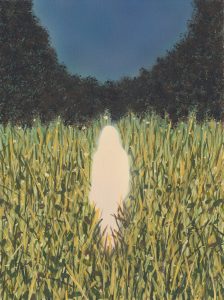 In solitude we can have the deepest realizations of inter-being. . . . There arises an intense awareness of relationship, of all the small and interconnected miracles we never noticed in our rushed and busy lives.
In solitude we can have the deepest realizations of inter-being. . . . There arises an intense awareness of relationship, of all the small and interconnected miracles we never noticed in our rushed and busy lives.
I invite you to consider your own deep realizations of our inter-being. We can be grateful for the ordinary miracles of our aliveness. Kathleen describes:
Our own breath, breathed by seven [now 8] billion other human beings, shared by immeasurable flora and fauna. Our own body, created from the same stuff as the stars. A vast organic process of existing, of being. Every arising conditioned by every other arising in each stunning moment that fills this hallowed cosmos. Without continuous, attached reference to self, we can rest our awareness in this inter-being, the awe filled wonder of interconnectedness.
What wondrous constellation of interconnection can you imagine? Each being is conditioned by so many other beings. We may at times feel lonely and, yet, are ever truly alone? Together and alone, let us hear Padraig O Tuama’s lyrical poem, How To [Belong] Be Alone:
Listen
It all begins with knowing
nothing lasts forever,
so you might as well start packing now.
In the meantime,
practice being alive.
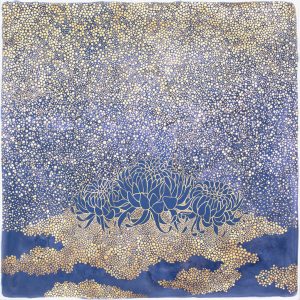 There will be a party
There will be a party
where you’ll feel like
nobody’s paying you attention.
And there will be a party
where attention’s all you’ll get.
What you need to do
is to remember
to talk to yourself
between these parties.
And,
again,
there will be a day,
— a decade —
where you won’t
fit in with your body
even though you’re in
the only body you’re in.
You need to control
your habit of forgetting
to breathe.
Remember when you were younger
and you practiced kissing on your arm?
You were on to something then.
Sometimes harm knows its own healing
Comfort knows its own intelligence.
Kindness too.
It needs no reason.
There is a you
telling you another story of you.
Listen to her.
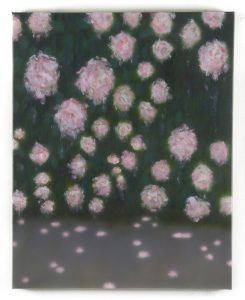 Where do you feel
Where do you feel
anxiety in your body?
The chest? The fist? The dream before waking?
The head that feels like it’s at the top of the swing
or the clutch of gut like falling
& falling & falling and falling
It knows something: you’re dying.
Try to stay alive.
For now, touch yourself.
I’m serious.
Touch your
self.
Take your hand
and place your hand
some place
upon your body.
And listen
to the community of madness
that
you are.
You are
such an
interesting conversation.
You belong
here.
I invite you to relax. Rest on Earth’s body. Feel the subtle changes of body pausing to allow, to receive support. Can you draw on comfort’s “own intelligence” to rest your body, heart and mind? Can you offer yourself “kindness too. It needs no reason.” Padraig reminds us that in learning to be alone we find belonging.
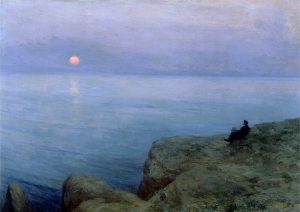 Kathleen Dowling Singh encourages us “to transform loneliness to aloneness, far before the time of our death.” She believes we make this transformation possible by “nourishing ourselves in the richness available in solitude.” She explores the different nature of loneliness and aloneness:
Kathleen Dowling Singh encourages us “to transform loneliness to aloneness, far before the time of our death.” She believes we make this transformation possible by “nourishing ourselves in the richness available in solitude.” She explores the different nature of loneliness and aloneness:
. . . Loneliness is an experience of pain of our own conceived separateness, undernourished by spirit. It is an experience of deficiency. In it, we think and feel that we are not sufficiently cared for or cared about. . . [W]e feel the absence of the attention of others. . . . Loneliness appears choiceless. . . .
In . . . aloneness, solitude is viewed through the lenses of gratitude and openness. The condition of solitude is recognized as having been made. . . as an act of wise . . beneficial choice. . . . Solitude, accepted and chosen, is rich and transformative. It has a sense of fullness, wholeness, sufficiency. . . Solitude arises as we increasingly release ourselves from the gravitational pull of our attachments. . . .
How do your experiences of loneliness and aloneness differ? Can you recall the conditions that gave rise to these states? As you recall past moments of loneliness can you reflect on Padraig’s voice:
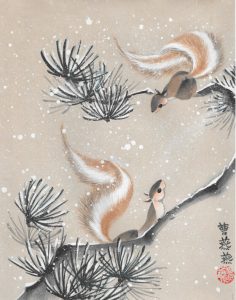 There is a you
There is a you
telling you another story of you.
Listen to her.
Where do you feel
[loneliness] in your body?
The chest? The fist? The dream before waking?
. . . It knows something: you’re dying.
Try to stay alive.
Kathleen acknowledges that:
To override our initial, habitual inclination to turn away takes courage, strength of heart. . . . We need just the tiniest bit of deeper understanding and the tiniest bit of courage to relax the reactive contraction of “me.”
We don’t do this all at once. We go through progressive waves of deeper opening and more subtle insight. . . . We coax ourselves through each increasing relaxation of the contraction, each deeper release of all the habits of self-grasping . . .
In our practice, alone together, can we cultivate the courage and wisdom to remember:
There is a you
telling you another story of you.
Listen to her.
Where do you feel
[loneliness] in your body?
. . . For now, touch yourself.
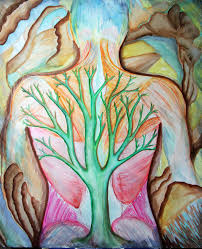 Take your hand
Take your hand
and place your hand
some place
upon your body.
And listen
to the community of madness
that
you are.
You are
such an
interesting conversation.
You belong
here.

